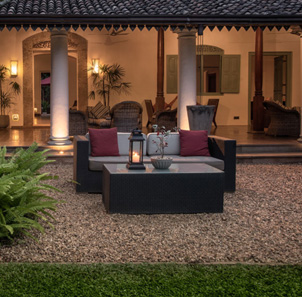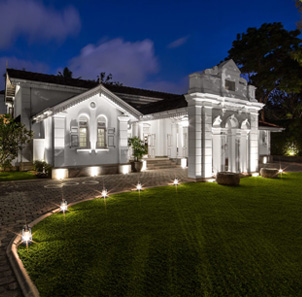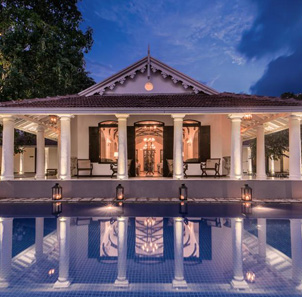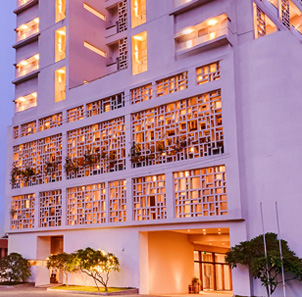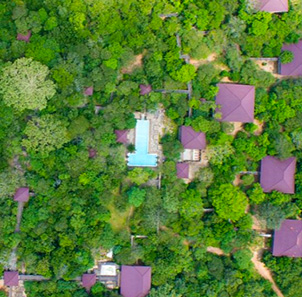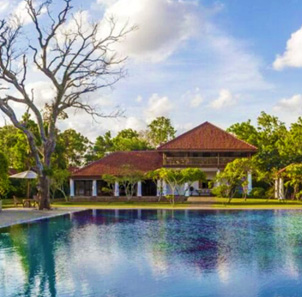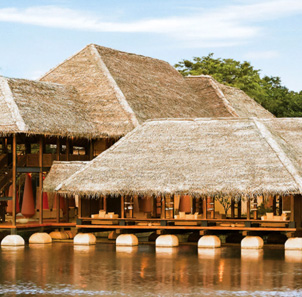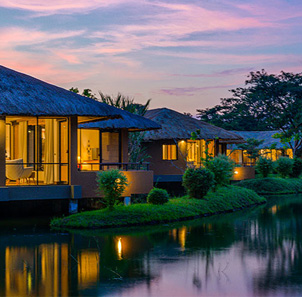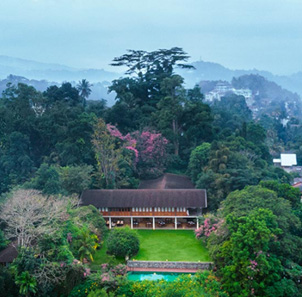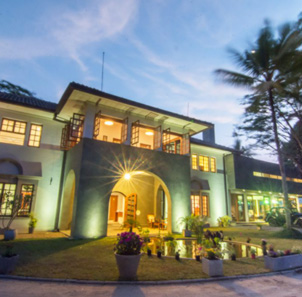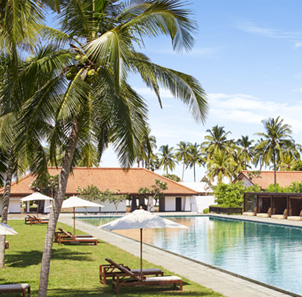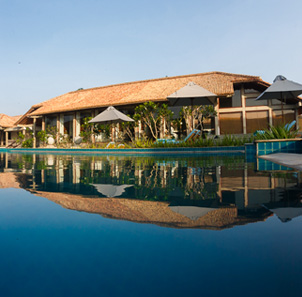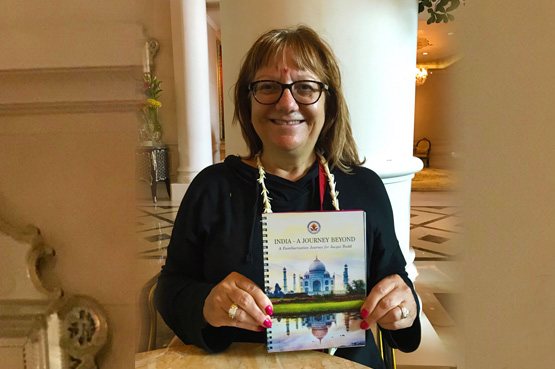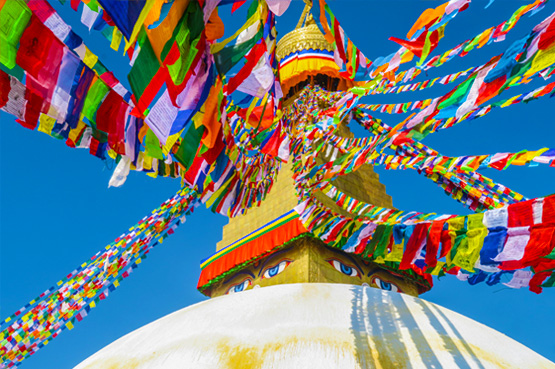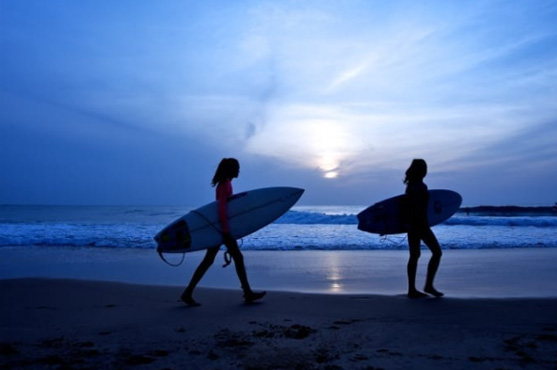The Cultural Gems of Sri Lanka
This is Sri Lanka, the land of Serendipity - of happy surprises! No wonder Marco Polo declared the atoll “the finest island of its size in the world; `Taprobane’ to the ancient Romans, `Serendib’ to the Arab traders, `Ceilao’ as Christened by the Portuguese, `Ceylan’ by the Dutch followed by `Ceylon’ by the British and finally Sri Lanka to the Sinhalese.
The teardrop shaped southernmost point of mainland Asia became an indispensable port of call to the earliest travelers awaiting favorable trade winds for onward journeys. This Great Emporium became a principal center of exchange and commerce between the Mediterranean trade of the Roman empire and the wealth of imperial China. The Portuguese came with sword and cross, the Dutch with ledger and law book and the British with roads and railways.
When Buddhism declined in the country of its birth, India, it took root in Ceylon; and here, so its adherents claim, it is still to be found in its purest form.
Journey
- Day 1 Arrive Colombo
- Day 2 Fly Colombo - Jaffna
- Day 3 Jaffna
- Day 4 Jaffna
- Day 5 Jaffna - Anuradhapura
- Day 6 Anuradhapura
- Day 7 Anuradhapura - Sigiriya
- Day 8 Sigiriya - Dambulla - Sigiriya
- Day 9 Sigiriya - Kandy
- Day 10 Kandy
- Day 11 Kandy - Negombo
- Day 12 Negombo - Departure
Detailed Itinerary
DAY 1Colombo
Arrive at Sri Lanka's ocean city. Upon arrival in Colombo, the traditional gateway to the orient and the capital of Sri Lanka, you’ll be transferred to your hotel and enjoy your day at leisure.
DAY 2Fly Colombo - Jaffna
This morning after breakfast, drive to the Cinnamon Air Taxi Base, about 15 minutes away where you will take a domestic Flight to Jaffna.
After reconvening with your driver and guide, we begin our discovery of some highlights in, and around Jaffna.
Our visits include Kirimale Blessed water Pond , Shiva Temple and Point Pedro, the Northernmost point in Sri Lanka. We will also visit the American Missionary College and the Uduvil Girls’ College. The Uduvil Girls’ College was established in 1824 by The American Ceylon Mission founded by Harriet Winslow. This was the first girls’ school with hostel facilities in all of Asia.
Afterwards, drive to a bungalow in the area where you will have a traditional northern Sri Lankan lunch.
After lunch, we check in at our Jaffna hotel.
Spend the remainder of your day at leisure.
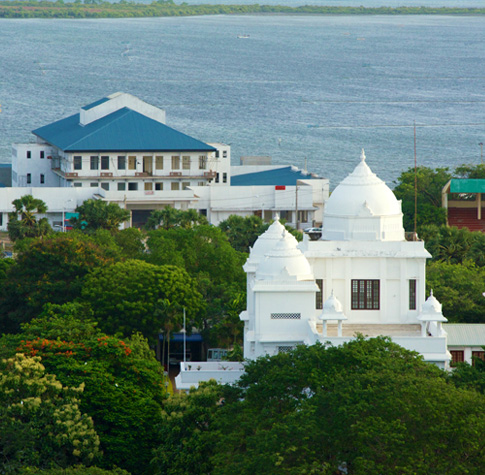
DAY 3Jaffna
Jaffna town and the Nallur Kandasami Kovil
Early this morning, we have the option of visiting the Jaffna fish market to witness the hype around the auction of the fresh catch, return to hotel for breakfast.
After breakfast, we continue sightseeing of Jaffna. we visit the Jaffna Library, the local markets ending the touring with a visit to Jaffna Fort.
Situated on the south side of the Jaffna peninsula at the water’s edge of the lagoon, the ancient fort in Jaffna is the second largest existing fort in the Island. Originally built by the Portuguese in 1619 and re-built and expanded by the Dutch during the second half of the 17th and the 18th centuries to facilitate trading activities of Sri Lanka’s northern region indicate not only of Jaffna’s strategic importance to Europeans but its significance throughout Sri Lanka’s history.
Return to your hotel and spend the early afternoon at leisure.
Towards evening, we depart for the Nallur Kandswamy Kovil.
Prior to the visit of the Kovil, we begin the touring this afternoon with a visit to the wood craftsman village, then onward to the temple tour ending with the Pooja ceremony.
We can join in the locals to perform the worshipping rituals, where you offer a basket of fruits to the Hindu deities and crack a coconut on a rock, making a wish and hoping that it would be granted. Story has it that the original Kovil which was erected in the 15th century was destroyed during the Dutch invasion and the present structure was built in the 17th century. Remember, the gentlemen will need to go bare-top to enter the Kovil.
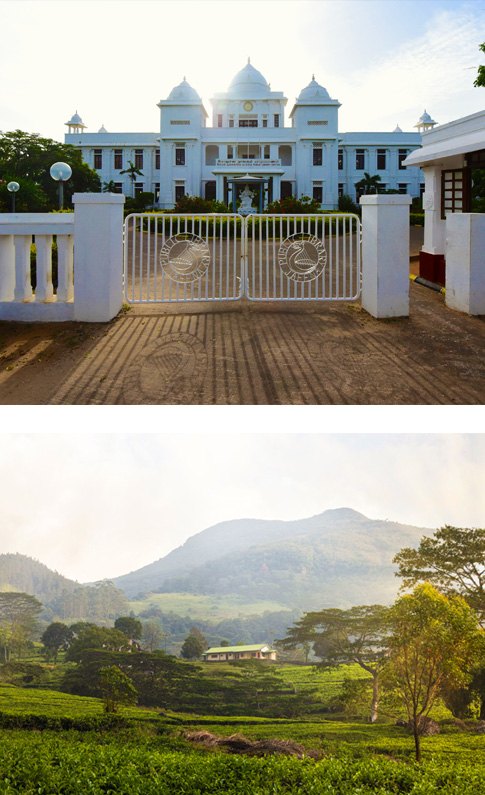
DAY 4Jaffna
Visit the northern Islands of Delft and Naga Deepa Temple
Today morning we have an early breakfast and afterwards drive along the causeway to reach the Jaffna jetty. Here we hop aboard a private boat to travel to Delft Island. (01 hour) We set off to explore the island.
Explore this remote island, allowing you to take in the sights of the old Delft Fort, an ancient Baobab tree and how Palmyrah toddy and crafts are made with local farmers. Ask to see the wild ponies grazing and learn the rich history of the island, dating back from the Dutch and Portugese periods as far as the Chola kingdoms. End your touring of the island with a simple rice and curry lunch.
We then return to our boat and transfer 30 minutes to Nagadeepa Island.
Arguably one of the most visited of Jaffna’s islands, Nainativu, or ‘Nagadeepa’ as it is referred to by locals, holds an important place in Buddhist and Hindu history. For the former, the Nagadeepa Purana Viharaya is worshipped as one of Sri Lanka’s holiest Buddhist sites where the Buddha was said to have once called upon two Naga kings in disagreement with each other. And for the latter, the Nagapooshani Amman Kovil, which is referred to in several ancient chronicles as one of 64 Shakthi Peethams located across South Asia – shrines dedicated to Shakthi, the Hindu goddess of power. Therefore, you may have the chance to witness many devotees on pilgrimage to both these sites, in hopes of attaining blessings for their future.
Return to your hotel afterwards and spend the remainder of your day at leisure.
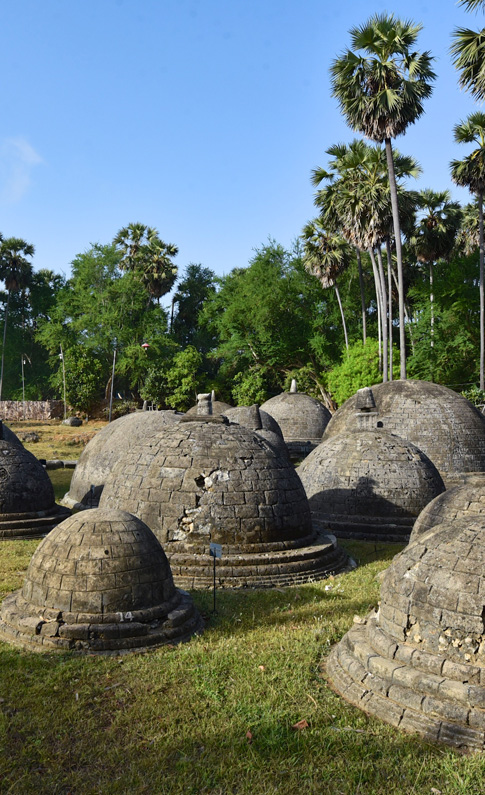
DAY 5Anuradhapura
After breakfast, we set off to the central province, a drive of close to 04 hours, heading to the vast ruined city of Anuradhapura, one of the most sacred places in Sri Lankan Buddhism.
At 5.00pm, drive to the Sacred city of Anuradhapura to visit the Shri Maha Bodhi Tree and the Ruwanweliseya at dusk to mingle with the local devotees. Return to your hotel by 7.30pm.
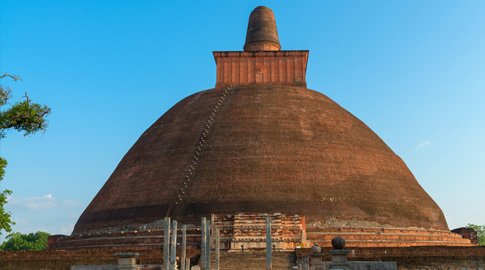
DAY 6Anuradhapura
You’ll meet with your guide after breakfast and embark on a guided tour of the UNESCO World Heritage site of Anuradhapura. This ancient city, now a picturesque ruin, was once the centre of Sri Lankan civilization, and provides a fascinating insight into early Sinhalese culture.
Though little-known today, few ancient capitals were as long lasting or as influential as Anuradhapura. Founded in the 4th-century BC, Anuradhapura served as the political and religious capital of Sri Lanka for over 1300 years, before succumbing to invaders from southern India in the late 10th century. During this period, the city saw the rise and fall of no fewer than 113 Sinhalese kings.
At its height, Anuradhapura was a major spiritual centre, containing hundreds of Buddhist monasteries and temples. While exploring the ruins, you’ll stumble upon bell-shaped stupas constructed of red brick, crumbling temples and magnificent sculptures, foremost among them the beautifully-preserved Thuparamaya, said to contain the clavicle of the Buddha. Moving away from the temples, you’ll discover the foundations of what were once palaces and homes, while the early Sri Lankans’ talent for urban planning is reflected in Anuradhapura’s sophisticated system of canals and reservoirs.
You could choose to return to your hotel for lunch or you could choose to have lunch at a local restaurant in the area. Your guide can give you recommendations.
After lunch, at around 2.30pm, depart for Mihintale, a mountain peak which is the cradle of Buddhism in Sri Lanka and riddled with shrines and cave dwellings. A grand 1,840-step stairway made of massive granite slabs leads to its summit. It is of great spiritual significance to Buddhists because it where Buddhism was introduced to Sri Lanka in the 3rd century BC. Mihintale has many different points of interest – the 1840 ancient granite steps, dagaba's, the relic house and monks’ refectory, the assembly hall, meditation rock, caves and ponds. The climb to the summit is also interesting from a scenic aspect for stunning views of the surrounding countryside.
We end the day with a visit to Kaludiya pokuna (near Mihintale) at dusk to indulge yourself in a private session of meditation with a local monk in ancient caves.
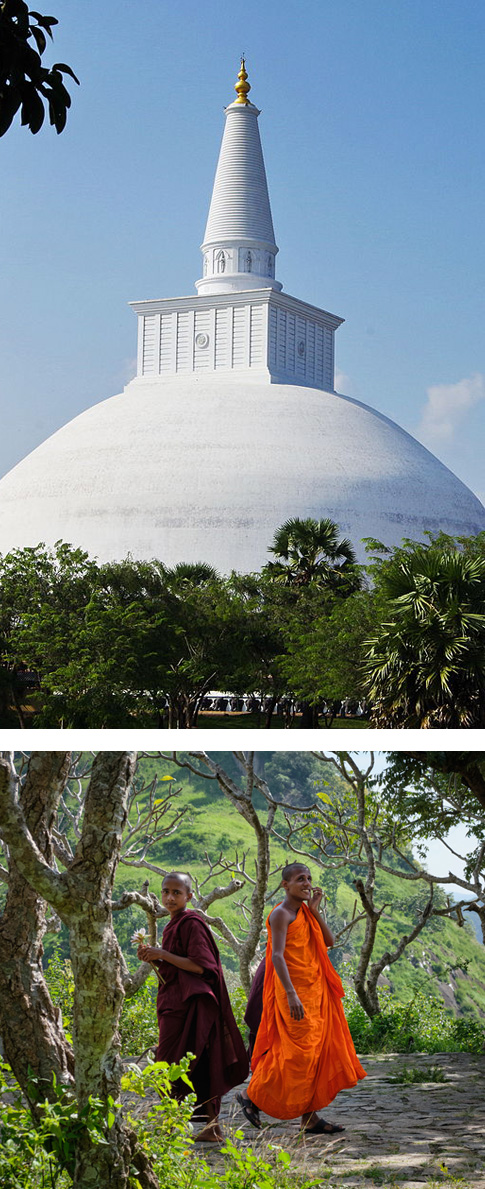
DAY 7Anuradhapura - Sigiriya
Today we’ll depart Anuradhapura after breakfast in a private vehicle and journey south to Sigiriya.
Check in at your hotel and enjoy some downtime.
In the afternoon, you set off for the Sigiriya Rock Fortress. Often dubbed the Eighth Wonder of the World, this giant rock citadel is Sri Lanka’s most spectacular monument. Built in the 5th century AD, during the reign of King Kasyapa, it’s an astounding feat of engineering, as well as a spectacular example of early Sinhalese art and iconography. Allow 3-4 hours to climb to the summit of Sigiriya. It’s a steep climb but worth the effort for the marvellous views from the top. Close to the summit, you pass through the “Lion Paws” which overlook the former royal gardens below, presenting an amazing spectacle
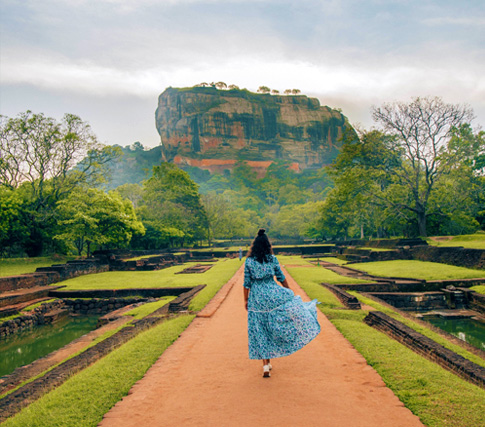
DAY 8Sigiriya - Polonnaruwa - Sigiriya
This morning after breakfast, drive 1.5 hours to explore the ancient ruins at Polonnaruwa. Polonnaruwa rose to prominence following the fall of Anuradhapura. The crown jewel of King Parakramabahu I, it served as Sri Lanka’s capital during the middle ages, and remains one of the country’s most impressive repositories of tradition and culture.
We’ll allow 2-3 hours to explore within Polonnaruwa’s old stone walls, where you’ll encounter crumbling stupas, reclining Buddha statues, and intricately-carved Hindu sculptures. Exploring the ancient city’s numerous monuments, you’ll be able to continue the journey through Sri Lanka’s history that you begun in Anuradhapura.
Upon completion of the site, we enjoy a traditional home cooked Sri Lankan meal at a rural café, prepared using wood fire, clay pots…
While on our way back to Sigiriya from Polonnaruwa, we’ll embark on an exciting journey into Minneriya National Park. The park covers 8,890 hectares and consists of a mixed forest of evergreen shrubs, a favourite habitat for animals, which include, deer, crocodiles and wild elephants. In more recent times it been discovered that the park witnesses the largest elephant gathering in the world during these months. You can also see huge flocks of birds, including cormorants and painted storks that come to fish in the shallow waters. Enjoy a jeep safari to explore the park with a skilled park guide or naturalist who will point out wildlife to you and help you get the most of the experience. Return to the hotel in the evening.
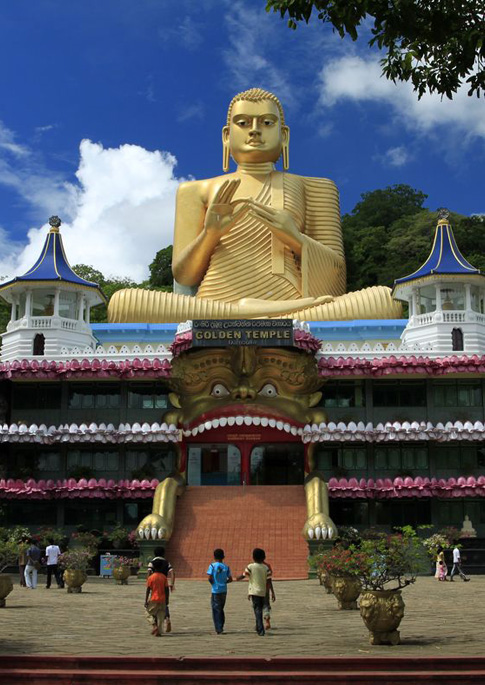
DAY 9Sigiriya - Dambulla
Today we depart Sigiriya for Kandy, travelling via Matale and the Dambulla Cave Temples. The Royal Rock Temple complex in Dambulla consists of five separate caves containing well over one hundred Buddha statues and paintings. Dating back to the 1st-century BC, they constitute Sri Lanka's largest and best-preserved cave temple complex, and contain some of the country's most iconic and evocative examples of religious art. Adjoining the Dambulla Rock Temples is the Golden Temple, said to date back to the 5th century BC.
After exploring Dambulla, take a tour of the Ranweli Spice Gardens, where you’ll be able to learn about the great variety of spices grown in Sri Lanka, followed by lunch served in the paddy fields.
After lunch, we’ll continue to Kandy. On arriving into the city, we’ll assist with check-in at your hotel.
In the late afternoon, we’ll visit the sacred Temple of the Tooth. The temple houses one of Buddhism’s most sacred relics – the left canine tooth of the Buddha himself – and over the millennia since his death, wars have been fought for the possession of this sacred symbol of the Buddha’s power and protection. Today, the Temple of the Tooth attracts Buddhist devotees from all over the world. The Royal Complex, situated around the Temple of the Tooth and Kandy Lake, represents the zenith of ancient Sri Lankan architecture. We’ll return to the hotel.
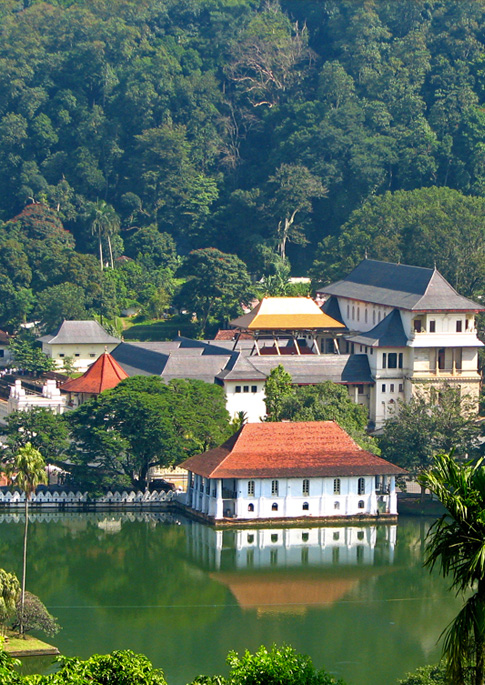
DAY 10Kandy
This morning, we’ll visit the Royal Peradeniya Botanical Gardens. Home to nearly 4,000 species of plants and encircled by a river, the gardens boast an impressive avenue of coconut palm trees, a fragrant spice garden, giant bamboo plants, an orchid collection and a gargantuan Javan fig tree.
Afterwards, we then visit the Sooriyakantha Centre for Arts and Culture for lunch.
The "Sooriyakantha Centre for Arts & Culture" is established within the 18th century "Walawwa"or an ancient village chief's residence. The Walawwa, inspired by quintessential Dutch architecture houses an interesting panoply of ancient books, Buddhist manuscripts, photography, collection of ancient and traditional furniture and wall paintings.
We meet with Professor Jacques Soulie, a French national who has been residing in Sri Lanka for over 40 years is a co-founder together with Rohan De Silva who interestingly combined their interests and passion for collecting ancient Sri Lankan books, furniture and monuments. Professor Jacques Soulies personally welcomes you to this establishment where he proudly takes you through the different section of the house and help you discover a piece of Sri Lankan history.
After lunch, Visit Master Ruwan, who is a guru of the ancient Kandyan art of dancing and drumming.
Traditional Kandyan dances include the cobra dance, mask dance and the Ginisila (showing power over fire). The entire frenetic and colorful spectacle climaxes with an amazing fire-walking act. The dancers wear elaborate costume including a headdress, their chests only covered by a decorative beaded net. The Kandyan Dance is traditionally performed to percussion only; the most common drums are the 'Geta Beraya' and 'Yak Beraya.' To assist the dancer to keep rhythm a small pair of cymbals is also used as well as conch shell to announce the arrival of the dancers and the climax of the dance. The drummers have lyrics that are sung in tune with the movements of the dancer. This experience is very engaging as our local dancing master will teach you the basics of dancing and drumming if you are interested. You can also pose for some photographs clad in the traditional Kandyan Dancing attire.
Return to your hotel afterwards.
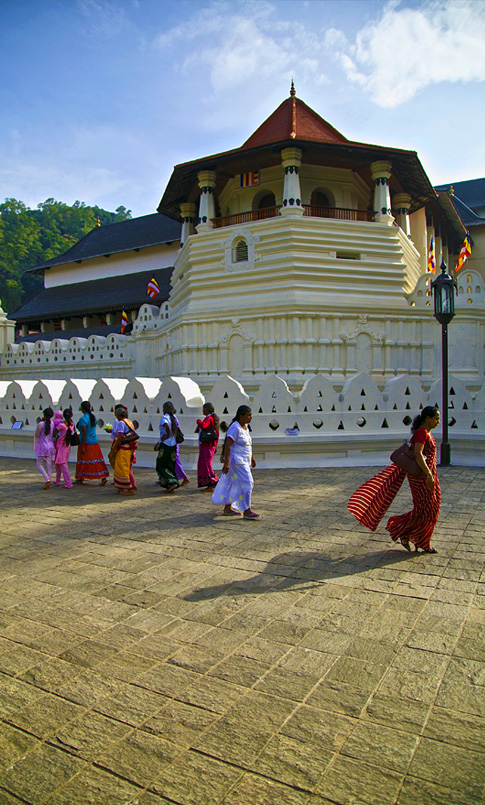
DAY 11Negombo
After a leisurely breakfast this morning, check-out of your hotel and drive to Negombo, a fishing village set on the West coast, 20 minutes away from the airport. You could choose to explore Kandy city a little while longer before you leave.
Spend the remainder of your day at leisure, or you could choose to explore Negombo city as well.
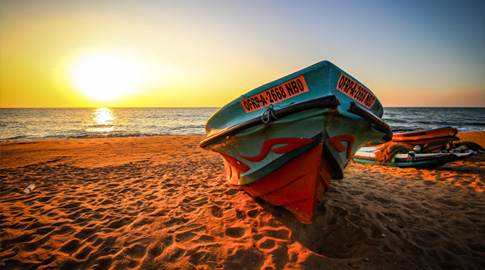
DAY 12Negombo - Departure
Depart for the international airport for your flight back home.


